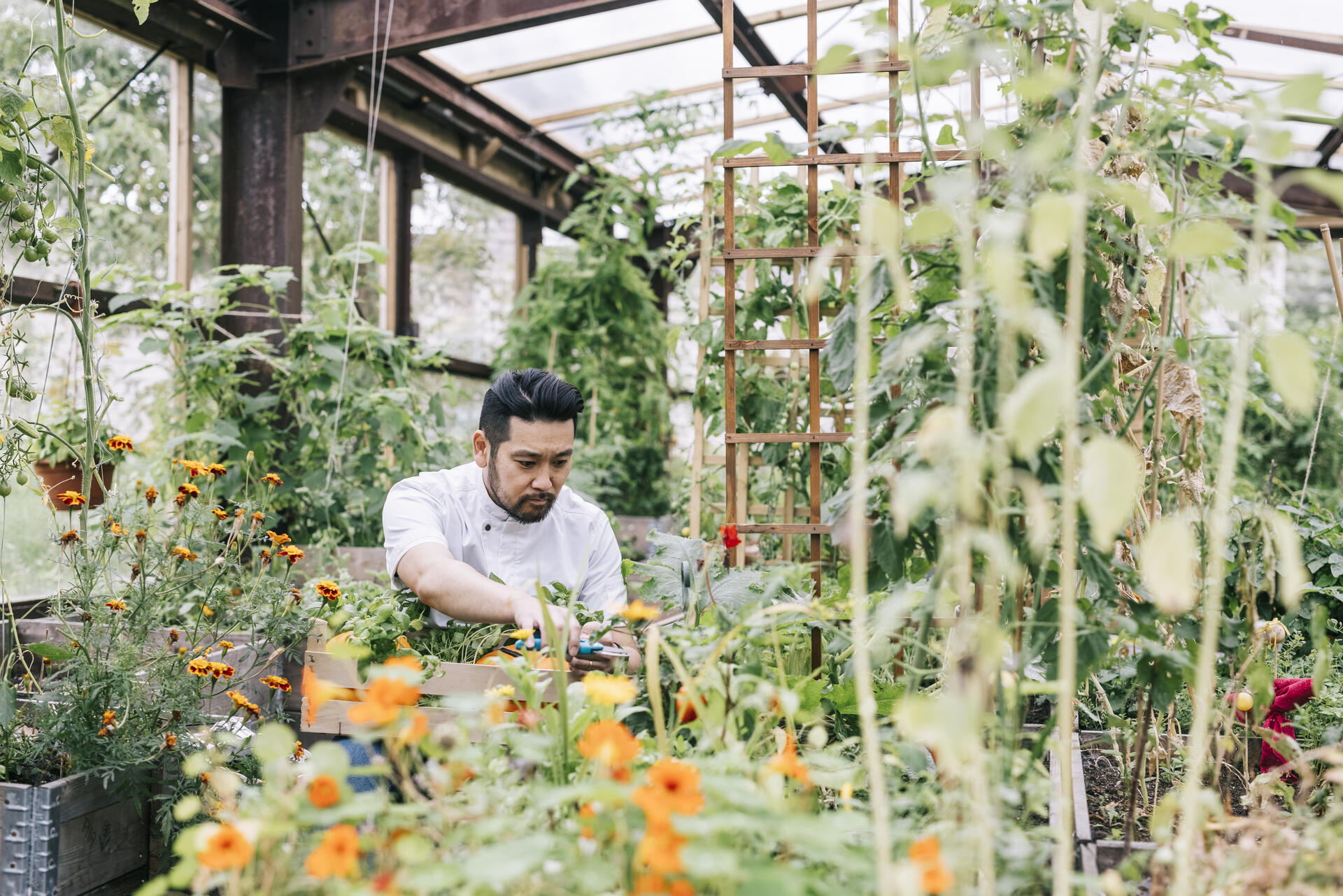Sustainable cuisine
Cooking in the here and now, with an eye on the future

Which movement are we in today? The chefs who inspire contemporary cuisine are aware of where they are living and working. They make their choices with an eye on the future. So, quite appropriately, this new movement is called “sustainable cuisine”. Sustainable means that you try to preserve what is there: in terms of the earth, but also in terms of your country’s or region’s culture.
Danish chef René Redzepi didn’t call his style “Nordic Cuisine”, but the cuisine of the “here and now”. Alex Atala and Virgilio Martínez are throwing the cuisines and products of their respective countries into the spotlight. In the Netherlands Jonnie Boer has been doing this for years, and chefs like Joris Bijdendijk are showing just how special (hyper)local can be.

- Awareness of the seasons in our cooking.
- Special, natural ingredients.
- Fermentation and pickling 2.0.
No. 1 advisors
In the midst of that constant change, how can you plot your own path?
It might be stating the obvious, but when it comes to developing your cooking style and the resulting dishes, your guests are your number-one advisors. It goes without saying that they want to be surprised and see that you are moving with the times, but they are the ones who dictate just how far you can actually go. Watch and listen carefully to how they react to your creative endeavors. Talk to them, actively ask for their feedback – and actually do something with it. Don’t be afraid of the limitations that this may impose on your creative sphere; within these limitations, there are still endless opportunities for surprising your guests without ignoring their needs.

Those who use their knowledge of the past are much better placed to make better predictions about what awaits us in the near future. You don’t need to be a psychic to see that over the past hundred years, there have been clear patterns of new movements and trends that have come and gone. One trend that never goes away is the refinement of dishes and cuisines. But what trends are hot right now, and what major changes can we expect in the world of gastronomy in the coming years?
Finding a balance on the plate
The tremendous growth of the world’s population means that everyone will have to make some adjustments to their diet and find a balance between plant-based and animal-based nutrition. You can, much more than you think, make a very real contribution to a positive change in the eating behavior of consumers. As a chef, you especially can inspire your guests at the table with sustainable dishes and show them that there’s more out there than just large pieces of meat or fish. Especially when it comes to special vegetable preparations, you can really surprise your guests and give them new insights.
(No) waste
Wasting ingredients is set to become more of a taboo than ever before. Show your guests – and let them taste! – all the wonderful things you can make using broccoli stems, vegetable peels, and other products we currently see as waste. But also think about what you could do with unused parts of meat and fish discards. Think of it as another way to boost your creativity!
Hyperlocal and “terroir”
Do you already have your own vegetable garden? Or perhaps even a whole forest with a lot of food? Cultivating or picking your own produce and actually being able to taste the soil it was grown in, so to speak, is a fantastic experience. It’s the ultimate way to put your natural environment on the plate. But there is another way: by venturing out into your region to find local, passionate producers. When it comes to “terroir” cooking, “De Ark van de Smaak”, published by Slow Food Nederland, is a must-read; it provides a wonderful overview of the products that grow naturally in your region.
Less luxury and fewer rare ingredients
Partly as a result of outlandishly high prices and sometimes questionable production methods, the desire for exclusive ingredients such as lobster, turbot, foie gras, and caviar is declining. Nor do they pose much of a creative challenge for many chefs, as they require minimal preparation. On top of that, molecular gastronomy has shown everyone that you can turn even the simplest tuber into something special. Just think of all the preparations involving beetroot, for example, that we have seen in recent years. You don’t need luxury or exclusive ingredients to create wonderful surprises.
To follow or not to follow
No one can predict the future and say with certainty what will evolve into a trend or movement. We are currently seeing the “seeds” of Weastern, plantisserie, and frasian starting to emerge, as well as movements like Slow Food and Dutch cuisine. And then we also have to factor in global political and economic developments. All of which begs the question: what should you follow, and what should you let pass you by? Whatever you choose, always hold on to what is good, to what your guests keep coming back for, and keep refining that. Where possible, aim for perfection, and add to it elements from developments that come your way. This way you keep your vision and cuisine up to date and fresh. Evolution trumps revolution!

We all want to take care of our planet so we can keep enjoying it. Here are some tips & tricks for a sustainable restaurant or bakery/pastry shops.
Discover more







